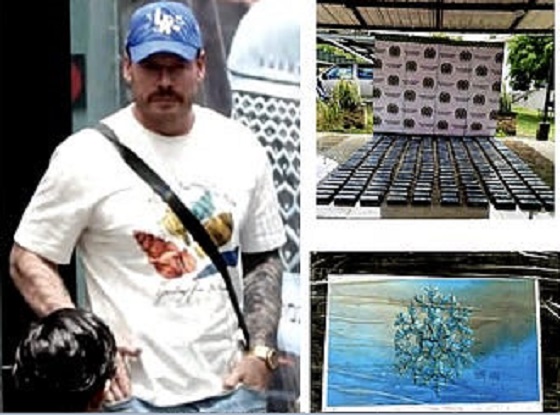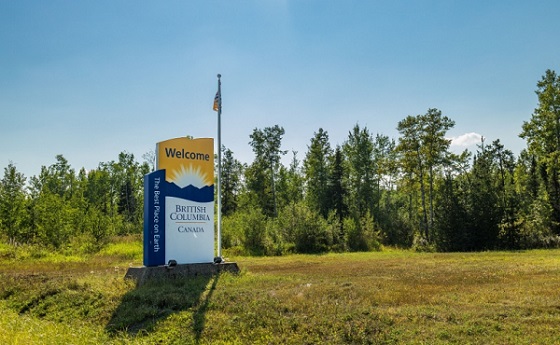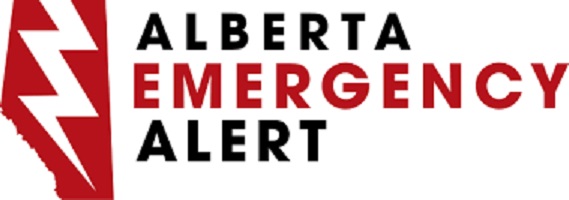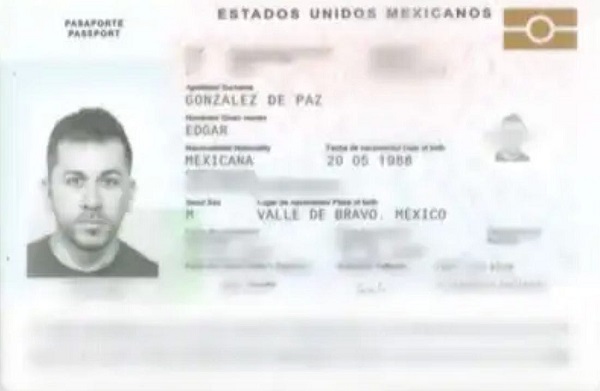Crime
Texas and Alberta law enforcement team up in arrest of Edmonton man on child exploitation charges
International Co-operation Leads to
Child Exploitation Arrest
Edmonton… Co-operation between law enforcement agencies in Texas and Alberta has resulted in the arrest of an Edmonton man on a number of child exploitation-related charges.
ALERT’s Internet Child Exploitation (ICE) Unit executed a search warrant in Edmonton on August 15, 2019, with the assistance of Edmonton Police Service, and arrested a 35-year-old man.
Based on information shared by the Abilene (Texas) Police Department, ICE Unit investigators allege that a nine-year-old girl from Abilene was being lured over the internet, engaging in explicit conversations and sharing nude photographs over a social media application dating back to March 2019.
“There are no borders on the internet, so it’s imperative that law enforcement agencies are able to share information on cases like this,” said Cpl. Dave Knight, ALERT ICE Unit. “Once we received the information from Texas, we acted as quickly as we could to arrest the suspect and ensure the child’s safety.”
“It’s nice to see agencies working together, even internationally, for the protection of children who are our most vulnerable victims,” added Det. Catherine Mason, Abilene Police Department. “The Abilene Police Department in Texas greatly appreciates the response from Alberta Law Enforcement Response Teams in the apprehension of this suspect.”
Adam Warwick, 35, has been charged with:
- child luring;
- exposing a child to explicit material;
- making child pornography;
- distributing child pornography; and
- possession of child pornography.
Abilene, Texas, is a city of more than 170,000 people located approximately 290 kilometres east of Dallas.
Anyone with information about any child exploitation offence is encouraged to contact local police or www.cybertip.ca.
ALERT was established and is funded by the Alberta Government and is a compilation of the province’s most sophisticated law enforcement resources committed to tackling serious and organized crime.
Crime
Cocaine, Manhunts, and Murder: Canadian Cartel Kingpin Prosecuted In US

From Caledon to Mecca and Medellín: U.S. Says Toronto ‘Cocaine Lawyer’ Used Encrypted Chats Inside Wedding’s Murder Conspiracies
On the path to becoming the first Canadian of genuine Latin American cartel stature — a man the FBI has likened to a “modern-day iteration of Pablo Escobar” — Ryan Wedding did not simply exploit Canada’s borders, ports and highways to move cocaine, methamphetamine and fentanyl.
Prosecutors say he became the single largest cocaine importer into Canada, building a billion-dollar enterprise by mastering cryptocurrency money-laundering, legal strategy, paramilitary training and the kind of hardened operational security usually associated with state intelligence agencies.
It was an operation, U.S. authorities now allege, in which a brash Toronto criminal lawyer not only counselled murder and helped arrange bribes, but also tapped into Canadian police evidence to glean information about a contracted assassination that collapsed into tragedy — the killing of innocent people mistaken for the family of an Indo-Canadian narco-trucker.

A stunning 50-page indictment unsealed in California this week explains how Wedding allegedly discovered that a trusted associate in both cocaine trafficking and crypto-based money-laundering — identified only as “Victim A” in the document — had quietly become a federal informant. The murdered government witness is Jonathan Acebedo-Garcia, a Colombian-Canadian who appears in prosecutors’ Tether-crypto flow chart as a key node in Wedding’s KuCoin-centred laundering network.
According to the indictment, Wedding then turned to Toronto lawyer Deepak Balwant Paradkar — “a dual Indian-Canadian citizen” listed under aliases including “cocaine_lawyer” — and, together with his top lieutenant Andrew Clark, used encrypted Threema chats to plan Acebedo-Garcia’s murder in Medellín. For Paradkar, now under arrest in Canada and facing extradition, the brutality alleged in the filing is not confined to a distant Colombian restaurant. The indictment also places him at the centre of two other crises in Wedding’s empire: a 521-kilogram cocaine seizure in Arkansas, and a botched assassination in Caledon, Ontario, that left an innocent Indo-Canadian family dead.
The Arkansas strand starts on October 1, 2024, when Canadian truckers Maninderjit Singh Dhillon and Ranjodh Singh were stopped in Hazen, Arkansas, with “approximately 521 kilograms” of cocaine. That same day, Wedding told Clark on Threema that their load had been seized and sent Dhillon’s name. Clark then asked — in coded language — if Wedding wanted Paradkar “to monitor Dhillon and Singh’s arrests,” and Wedding agreed, suggesting that an American lawyer be used to obfuscate the Toronto lawyer’s role.
In a Threema group chat with Clark and a transport co-conspirator, Paradkar allegedly asked for the drivers’ names and licences, said he would “look into it,” and asked if there were “any relatives” he could contact. The key line in the indictment states:
“On October 1, 2024, in the Threema group chat and using coded language, defendant PARADKAR advised that he was calling law enforcement to obtain information about Dhillon and Singh’s arrests.”
Prosecutors say Paradkar later reported that he had located Singh in prison but not Dhillon, directed that Singh’s brother be told he was Singh’s lawyer so he could get the arrest report, and called Singh about his arrest “while Clark covertly listened in.”
When Clark and the co-conspirator began “discussing murdering Dhillon” on October 3, Paradkar allegedly told them “to discuss the matter on a different chat without him present and to delete any and all discussion of the murder plot.”
He is also accused of sending Clark discovery on the Arkansas case, drafting questions over WhatsApp, then deleting the messages and turning on disappearing-message settings before calling Dhillon again with Clark listening.
The same document links Wedding and Clark to an earlier hit order on another truck driver, CC-1, a driver they believed had stolen a massive load. Under a section headed “Victims B, C, and D,” prosecutors write that: “On or before November 20, 2023, defendant Wedding and Clark issued an order to kill a driver co-conspirator whom they believed stole 300 kilograms of cocaine from them.”
According to the indictment, members of a Canadian-based assassin crew then “broke into a rental property in Caledon inhabited by Victims B, C, and D” and “shot and killed Victims B and C and shot and wounded Victim D, mistakenly believing that they were CC-1’s family members.”
Local coverage at the time identified the slain couple as Jagtar Sidhu, 57, and his wife, Harbhajan Sidhu, 57, both killed by gunshot wounds after officers were called to a late-night shooting. Their daughter was rushed to hospital in serious but stable condition. In an interview, the couple’s son — speaking on condition of anonymity — said he had been at work when the shooting took place and that his parents and sister were shot multiple times. He said his parents had travelled from India to visit him and his sister, who had come to Canada as international students.
Nearly ten months later, Paradkar is again alleged to have somehow obtained sensitive information and channelled it from Canadian police back to cartel command:
“On September 11, 2024, via Threema, defendant PARADKAR sent Clark screenshots of evidence obtained by the Ontario Provincial Police during its investigation of the shootings of Victims B, C, and D.”
Before turning back to the Medellín murder allegedly counselled by Paradkar, the indictment sets out the staggering scale of the enterprise that made Acebedo-Garcia so valuable — and, allegedly, so expendable.
Prosecutors describe the Wedding Criminal Enterprise as “a billion-dollar drug trafficking organization and the largest supplier of cocaine to Canada,” operating simultaneously in “Mexico, Colombia, Canada, and the United States, among other countries.” They say the group sourced cocaine from Colombia, “cooking and testing it in ‘cocaine kitchens’ run collaboratively with a Colombian neo-paramilitary group and drug cartel,” then working “in conjunction with members and associates of prominent Mexican drug cartels” to move “hundreds of kilograms of cocaine from Colombia to Mexico at a time” by boat and plane.
In this telling, Southern California is the hub between Latin coca fields and Canadian and American drug dens.
“The Southern California Counties of Los Angeles, San Bernardino, and Riverside generally served as the ‘hub’ where the Wedding Criminal Enterprise’s cocaine was stored before being conveyed by Canadian drug transportation networks to final destinations in Canada and other American states, with the cocaine predominantly being distributed in Canada.”
The indictment says the enterprise’s purposes included “establishing control over the Canadian drug trade” and “violently retaliating” against anyone perceived to be co-operating with law enforcement.
As reported previously by The Bureau, the trucks and routes tasked by Wedding were controlled by Indo-Canadian crime networks. The U.S. government says that the Toronto lawyer Paradkar “introduced Wedding to the drug traffickers that have been moving Wedding’s cocaine and has also helped Wedding with bribery and murder.”
In late summer 2024, Acebedo-Garcia — Victim A — was still a trusted intermediary inside that system. Prosecutors allege that: “Between August 15, 2024, and September 6, 2024, using Victim A as an intermediary, defendant WEDDING purchased 300 kilograms of cocaine to be shipped from Colombia to Mexico.”
A Colombian lab manager, Carlos Eduardo Riascos, is then said to have received the order “for 300 kilograms of cocaine” from Wedding, and on September 11, 2024, to have been paid about two billion Colombian pesos which “had been converted from cryptocurrency” for “approximately 300 kilograms of cocaine.” Within weeks, Riascos allegedly launched a shipment of “approximately 240 bricks containing cocaine” out of Cali.
In parallel, U.S. authorities say they were mapping the Tether flows linked to this cargo. The truncated flow chart in the indictment shows large transfers moving from KuCoin accounts associated with financier Rasheed Pascua Hossain of Vancouver, and others into a hub wallet tied to Wedding — including a 564,571-USDT transfer directly from Wedding to Victim A. Those arrows, prosecutors argue, capture the way Acebedo-Garcia sat at the intersection of Wedding’s cocaine supply and his crypto-laundering machine.
On October 17, 2024, that world was exposed. A first superseding indictment, “Wedding I,” was unsealed in the same federal court, charging Wedding and Clark in a continuing-criminal-enterprise case. According to the new filing, it was in the aftermath of that disclosure — once it was clear that Victim A had become a co-operating witness — that the Toronto lawyer allegedly proposed killing him as a legal strategy.
“On or after October 17, 2024, defendant Paradkar advised defendant Wedding and Clark that if Victim A was killed, the charges against them in Wedding I and related extradition proceedings would necessarily be dismissed,” the record says.
In a prior exclusive report, sourced from U.S. law enforcement, The Bureau revealed that some American investigators believed Canadian police provided little assistance as bodies mounted.
“We tried to work with RCMP on Wedding too, and they said, ‘No,’” a source aware of probes from three separate U.S. agencies said. “He’s killed God knows how many. But the RCMP threw up roadblocks. Just in the Greater Toronto Area alone, people were falling once a week. Especially when the heat was getting closer to this guy, he started killing all the people he knew. And I think there were seriously missed opportunities.”
From Mecca to Medellín
Prosecutors say Wedding responded by placing “a bounty of up to $5 million USD on Victim A in exchange for any person locating and killing Victim A.” He allegedly enlisted a Laval, Que., hitman, Atna Ohna, described as “a hired sicario”; a Colombian madame, Carmen Yelinet Valoyes Florez, who “operated a network of commercial sex workers”; a Colombian sex worker, Daniela Alejandra Tejeda, who provided Victim A’s personal information; and a cluster of Canadian intermediaries and unidentified locals in Colombia and Saudi Arabia.
Once the U.S. government’s first indictment against Wedding was unsealed and Paradkar allegedly advised that killing Victim A would “necessarily” collapse the case, the manhunt for Acebedo-Garcia moved quickly. Florez, operating a Medellín-based commercial sex-work network that included Tejeda, allegedly used that network to track Acebedo-Garcia’s movements and glean intimate details — addresses, routines, contacts — that could be passed back to Mexico.
Canadian associates, meanwhile, were allegedly funnelling information from home. Defendant Ramon Basilio Demorizi, a Canadian resident, is accused of trying to locate Victim A through Edwin Basora-Hernandez, a Montréal-based reggaeton artist. Basora-Hernandez is alleged to have supplied Victim A’s contact information and to have told Demorizi — and, indirectly, Wedding and Paradkar — that Canadian law enforcement had approached him seeking Victim A’s whereabouts. According to one overt act, it was at this point that Wedding himself stepped into the hunt.
Assuming the persona of a lawyer, he allegedly arranged a conference call with Basora-Hernandez and his real-life legal counsel, Deepak Paradkar, during which Basora-Hernandez revealed that Canadian law-enforcement officers had approached him for information about the fugitive witness’s whereabouts.
In January 2025, Clark allegedly hired a Canadian associate, Ahmad Nabil Zitoun, to physically hunt Acebedo-Garcia for “approximately $10,000 CAD plus expenses.” Zitoun is accused of travelling to Medellín and then to Mecca, Saudi Arabia, trying to spot the fugitive witness. While he was in Mecca, the indictment says, Clark offered him the actual murder contract. Zitoun declined — but still received “approximately $40,000 CAD for attempting to locate Victim A” once he returned.
Throughout these weeks, the document alleges, the conspirators were sending each other surveillance pictures of Acebedo-Garcia.
The assassination itself, on January 31, 2025, reads like a textbook cartel hit. One unidentified conspirator, LNU 1, is described as a motorcyclist who “conducted reconnaissance of Victim A by following Victim A to a restaurant in Medellín before Victim A was murdered.” Another, LNU 2, is said to have been the shooter: “Defendant LNU 2, a motorcyclist, shot Victim A approximately five times in the head while he was eating at the Restaurant.”
A third, LNU 3, allegedly ferried the gunman away; a fourth, LNU 4, is described as a photographer who “cased the Restaurant” beforehand and “photographed Victim A’s dead body” afterwards; and a fifth, LNU 5, picked the photographer up and helped him flee along the same escape route as the shooter.
Within minutes, prosecutors say, images of the killing were being sent back up the chain. On January 31, Wedding allegedly used Threema to inform Clark that “Victim A was dead” and to send a photograph of his corpse.
And then the murder became content. Defendant Gursewak Singh Bal, a Mississauga man described as the founder of “the Dirty News” urban news outlet, is accused of posting a celebratory Instagram story showing the restaurant and the lower half of a body, with the caption: “[Victim A] down…” and “BOOM! Headshot.” A longer Dirty News post, quoted in the indictment, called Acebedo-Garcia “one of the informants involved in dismantling Ryan ‘Snowboarder aka SB’ Wedding’s transnational organization/criminal network” and claimed “there were bounties being placed on every individual involved in ‘snitching’ on the kingpins operations,” including seven-figure “hits.”
more to come on this breaking story
The Bureau is a reader-supported publication.
To receive new posts and support my work, consider becoming a paid subscriber.
Crime
‘Modern-Day Escobar’: U.S. Says Former Canadian Olympian Ran Cocaine Pipeline with Cartel Protection and a Corrupt Toronto Lawyer

Ryan Wedding, believed to be hiding in Mexico, is on the FBI’s Ten Most Wanted Fugitives list. The State Department reward is up to $15 million for information leading to his arrest.
The U.S. government has unsealed fresh criminal charges and sweeping financial sanctions against former Canadian Olympic snowboarder Ryan James Wedding, alleging that he orchestrated the importation of up to 60 metric tonnes of cocaine a year into the United States and Canada, relied on a Toronto lawyer who, according to the U.S. Treasury, “has also helped Wedding with bribery and murder,” and, while under the protection of a former Mexican law-enforcement officer with ties to senior Mexican police officials, ordered dozens of sophisticated assassinations across Canada, Latin America and the United States — including the execution of a federal witness in Colombia, according to U.S. government filings.
According to Attorney General Pam Bondi, “Wedding controls one of the most prolific and violent drug trafficking organizations in this world,” working “closely with the Sinaloa Cartel, a foreign terrorist organization, to flood not only American but also Canadian communities with cocaine.” Bondi said Wedding’s organization is responsible for moving multi-ton quantities of cocaine each year through Mexico into Los Angeles, before the drugs are shipped onward to Canadian and U.S. cities in long-haul semi-trucks.
As reported by The Bureau, these trucks and routes are controlled by Indo-Canadian crime networks. The U.S. government says that a Toronto lawyer, Deepak Balwant Paradkar, “introduced Wedding to the drug traffickers that have been moving Wedding’s cocaine and has also helped Wedding with bribery and murder.”

FBI Director Kash Patel likened Wedding to a “modern-day iteration” of Pablo Escobar and Joaquin “El Chapo” Guzmán and said Wedding is responsible for “engineering a narco-trafficking and narco-terrorism program that we have not seen in a long time.”
The Justice Department and FBI say Wedding, who competed for Canada at the 2002 Winter Olympics in Salt Lake City, now heads a billion-dollar-a-year narcotics enterprise that engages in cocaine trafficking, contract killings and intimidation across the United States, Canada and Latin America. Another target named along with Wedding is a former Italian special-forces soldier who helps the network with training, according to the U.S. government.
Wedding is believed to be hiding in Mexico and remains on the FBI’s Ten Most Wanted Fugitives list, with the State Department increasing its reward to up to $15 million for information leading to his arrest.
Prosecutors say the new indictment centres on the January 31, 2025, murder of a federal witness in Medellín, Colombia. According to U.S. Attorney Bill Essayli of the Central District of California, Wedding “placed a bounty on the victim’s head in the erroneous belief that the victim’s death would result in the dismissal of criminal charges against him and his international drug trafficking ring and would further ensure that he was not extradited to the United States.” The victim was shot five times in the head while dining at a restaurant in Medellín and died instantly, Essayli said.
Justice Department filings and officials at today’s Washington news conference allege that Wedding and his associates used a fake gangland “news” site, The Dirty News, as part of the plot. The indictment states that co-accused Gursewak Singh Bal, a Mississauga man described as co-founder and co-operator of The Dirty News, agreed — “in exchange for payment” — not to post negative material about Wedding and instead published a photograph of the cooperating witness so that he “could be hunted down and killed.” Essayli said the site was seized pursuant to a federal warrant and is no longer online.
Ten defendants were arrested Tuesday in Colombia, Florida, Québec and Ontario. In a parallel move, the U.S. Treasury Department’s Office of Foreign Assets Control announced sanctions against Wedding and nine individuals plus nine entities, effectively cutting them off from the American financial system.
Treasury describes Wedding as “an extremely violent criminal believed to be responsible for the murder of numerous people abroad, including U.S. citizens,” who “continues to direct drug trafficking, murder, and other serious criminal activities” from Mexico while on the run. The sanctions designation outlines a trans-Atlantic laundering system that moves proceeds through cryptocurrency, high-end cars and motorcycles, and front companies on three continents.

Among those named by Treasury:
Edgar Aaron Vázquez Alvarado, a former Mexican law-enforcement officer known as “the General,” who allegedly uses sources within Mexican police agencies to locate targets for Wedding and owns fuel-sector companies in Mexico;
Miryam Andrea Castillo Moreno, Wedding’s wife, accused of laundering his drug proceeds and assisting in acts of violence;
Carmen Yelinet Valoyes Florez, a Colombian running a high-end prostitution ring in Mexico who allegedly assisted with the murder of a federal witness;
Daniela Alejandra Acuña Macias, a Colombian national described as Wedding’s girlfriend, accused of collecting hundreds of thousands of dollars from him and helping obtain intelligence on rivals;
Deepak Balwant Paradkar, the Canadian attorney who Treasury says provided “illegal services” beyond a normal lawyer-client relationship, including introducing Wedding to key traffickers, helping with bribery and murder, and allowing Wedding to eavesdrop on privileged calls with other clients he allegedly wanted to kill;
Rolan Sokolovski, a Toronto jeweler who Treasury alleges laundered millions through his “Diamond Tsar” business and cryptocurrency transfers; and
Gianluca Tiepolo, an Italian former special-forces member who allegedly helped Wedding park his money in exotic vehicles and ran tactical training camps for hitmen.
According to Treasury, Paradkar “introduced Wedding to the drug traffickers that have been moving Wedding’s cocaine and has also helped Wedding with bribery and murder,” in exchange for luxury watches and additional fees. Vázquez and his Mexico-based fuel firms, Sokolovski’s jewelry company, and a series of Italian and U.K. vehicle and motorcycle dealers tied to Tiepolo have all been designated under Executive Order 14059 as part of Wedding’s laundering apparatus.
At the Washington news conference, Royal Canadian Mounted Police Commissioner Mike Duheme emphasized the role of cross-border cooperation, saying: “International cooperation, such as our involvement in Operation Giant Slalom, is vital to our ability to stay ahead of organized crime.”
But that message of seamless cooperation contrasts with what senior U.S. law-enforcement officials were saying privately months ago.
As The Bureau previously reported, a senior U.S. source insisted there has been a troubling lack of RCMP collaboration in probing Wedding’s networks. Not only did the RCMP allegedly stonewall Drug Enforcement Administration requests six years ago to crack down on Canadian trucking routes tied to Wedding’s shipments through the United States, the source said, but there was also a lack of cooperation in targeting his violent cells inside Canada — where associates, competitors, and even an innocent Indo-Canadian family in Caledon, Ontario, mistakenly linked to a trucker from Wedding’s network, were brutally executed.
“We tried to work with RCMP on Wedding too, and they said, ‘No,’” a source aware of probes from three separate U.S. agencies said. “And it’s like — he’s killing Canadian citizens. He’s killed God knows how many. And you still don’t want to cooperate because of whatever grievance. But the RCMP threw up roadblocks. You’ve got to get past those things because Canadians are dying.”
More to come on this breaking story.
The Bureau is a reader-supported publication.
To receive new posts and support my work, consider becoming a free or paid subscriber.
-

 Daily Caller2 days ago
Daily Caller2 days agoDemocrats Explicitly Tell Spy Agencies, Military To Disobey Trump
-

 Energy2 days ago
Energy2 days agoCarney bets on LNG, Alberta doubles down on oil
-

 Alberta2 days ago
Alberta2 days agoAlberta on right path to better health care
-

 Indigenous2 days ago
Indigenous2 days agoTop constitutional lawyer slams Indigenous land ruling as threat to Canadian property rights
-

 Daily Caller2 days ago
Daily Caller2 days agoALAN DERSHOWITZ: Can Trump Legally Send Troops Into Our Cities? The Answer Is ‘Wishy-Washy’
-

 Alberta23 hours ago
Alberta23 hours ago‘Weird and wonderful’ wells are boosting oil production in Alberta and Saskatchewan
-

 Alberta2 days ago
Alberta2 days agoCarney government’s anti-oil sentiment no longer in doubt
-

 Alberta2 days ago
Alberta2 days agoAlberta Emergency Alert test – Wednesday at 1:55 PM







